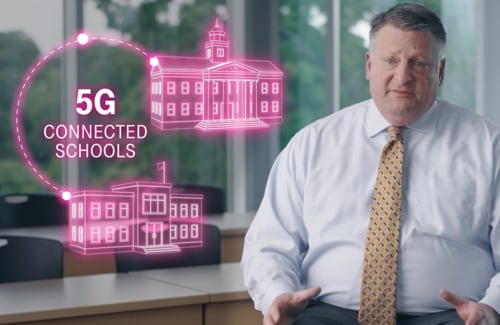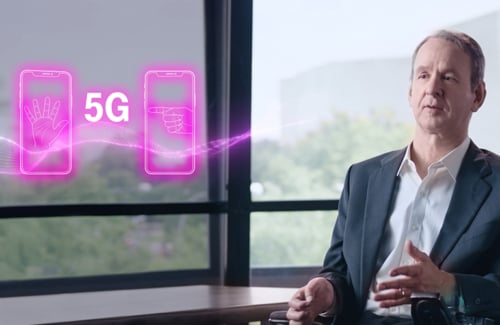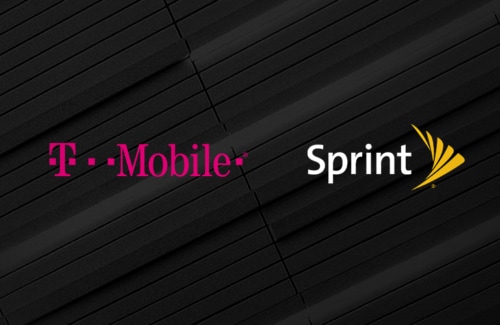5G will unleash a massive new round of innovation, and the New T-Mobile will be poised to deliver a truly transformative 5G network across the country. With the combined assets of T-Mobile and Sprint, along with a significant investment in building out a new supercharged 5G network, the New T-Mobile will be able to quickly develop and deploy 5G for all. 5G will usher in a wave of change and innovation, bolstering the economy and helping bridge the digital divide. The impact will be far-reaching.
To get a better sense of that impact, we’ve sought out experts in their respective fields to share their own vision of how 5G for all will empower people across this diverse country.
Here, we talk with Dr. Allen Pratt, the executive director of the National Rural Education Association, an organization of rural school administrators, teachers, board members, business leaders and others that has served as an outspoken advocate for rural communities and schools throughout the country for over 100 years. He is also an in-demand keynote speaker on the topic of rural education, and is an affiliate of the University of Tennessee at Chattanooga School of Education and Educational Leadership.
With more than half the Tennessee population living in rural areas, Dr. Pratt—a native of the state—is acutely aware of the education gap that persists on that side of the digital divide, from lack of connectivity for online learning to teacher shortages.
“A big part of change needed in rural communities is we’ve got to level the playing field,” he says. “If we do that for students, you’ll see amazing things happening in rural communities. But first we have to give them the necessary tools, so they can meet educational challenges and be the next creators and innovators to lead our country. Having 5G universally across the U.S. will open up doors that are currently not open to our rural students and their communities.”
Dr. Pratt offers insights as to how 5G will revolutionize education for students in rural America, and give its residents a voice equal to the rest of the country—and the world.
If we have connectivity and technology at the fingertips of these rural students, the sky’s the limit on what they can accomplish.
Let’s jump right in: How will 5G help to bridge the digital divide for rural students in this country?
There currently is a homework gap where students in rural and remote areas don’t have access to the same connectivity for online learning as students in more suburban and urban areas. If we have connectivity and technology at the fingertips of these rural students, the sky’s the limit on what they can accomplish. Virtual and augmented realities will allow students to make biological dissections, and take virtual fieldtrips and other technical training currently out of their grasp.
5G will further open the door for virtual and augmented realities to expand our students’ learning and give them a leg up to be successful in life.
We’re not on an equal playing field right now in terms of network connectivity and speeds.
Do you see the very idea of a physical classroom being transformed then?
School is not necessarily just about the brick and mortar experience anymore. With online learning we can create a personalized or blended learning approach. I think when you look at rural areas, if you can connect virtually with another school or an online educational platform, that can help fill the gap that current rural schools can’t provide because of things like teacher shortages, which is a very real problem in rural America. But we’re not on an equal playing field right now in terms of network connectivity and speeds. Lag time is a very important issue, especially when we’re dealing with online testing, which there is a growing demand for in a lot of states these days.
There are places in Tennessee where two students may live in the same county, but they live in totally different communities. The ones that sit closer to a suburban area have full connectivity at home. They can do homework and research away from the classroom. Whereas the other student that’s rural or remote may have to wait until she or he gets back to school the next day to complete that assignment. Add in other complications—inclement weather like snow, for example—and not being able to get to school to get online becomes a huge miss for rural students. Lack of connectivity and broadband issues are one of the top five educational barriers many rural communities list as pressing issues.
Lack of connectivity and broadband issues are one of the top five educational barriers many rural communities list as pressing issues.
How will 5G help students in rural America feel more heard?
I think it’s very important for rural students to be the documentarians of what America’s different towns and communities are all about—personally telling those place-based education stories of why it’s significant to be from a certain community or rural town in terms of our country’s entire history. To do that virtually so everyone in America can share and hear their story about why it’s important to live in the rural community is key, and 5G connectivity will empower more students to do just that. I think that’s an aspect that people don’t always think about. Each year our foundation does video essay contests from middle school and high school students. They explain why it is important to live in rural communities. They explain the highlights of their rural schools and why they are so special. It is very important to not let the outside world define rural.
It is vital our rural students understand and learn from other cultures.
Speaking of the outside world, what sort of impact will 5G have on helping rural students gain global perspective?
I think the connection between classroom to classroom globally is very important. It is vital our rural students understand and learn from other cultures. It is valuable for us to learn viewpoints through many different lenses. To do this makes our rural community stronger and more accepting.
Many school systems across the U.S. that are in rural areas have a hard time finding instructors that are actually native speakers of another language, Spanish or German or whatever it may be. It’s hard to find that person to live in your community. I think the online access and being able to video chat with someone and connect from country to country is important, to actually have that interaction. And I think having that ability in your pocket on a smart phone is very important as well, so you’re never out of touch with that connection for learning.
I also look at it from a sense of it’s an immersion. So, you’re being kind of full tilt into the world of learning another language, connecting your community with a foreign community and having students teach students. With 5G, rural students in America will be able to fully realize that the world is their oyster.
With 5G, rural students in America will be able to fully realize that the world is their oyster.
Important Additional Information
U.S. Securities and Exchange Commission (the “SEC”) on October 29, 2018, and which contains a joint consent solicitation statement of T-Mobile and Sprint Corporation (“Sprint”), that also constitutes a prospectus of T-Mobile (the “joint consent solicitation statement/prospectus”), and each party will file other documents regarding the proposed transaction with the SEC. INVESTORS AND SECURITY HOLDERS ARE URGED TO READ THE JOINT CONSENT SOLICITATION STATEMENT/PROSPECTUS AND OTHER RELEVANT DOCUMENTS FILED WITH THE SEC WHEN THEY BECOME AVAILABLE BECAUSE THEY WILL CONTAIN IMPORTANT INFORMATION. The documents filed by T-Mobile may be obtained free of charge at T-Mobile’s website, at www.t-mobile.com, or at the SEC’s website, at www.sec.gov, or from T-Mobile by requesting them by mail at T-Mobile US, Inc., Investor Relations, 1 Park Avenue, 14th Floor, New York, NY 10016, or by telephone at 212-358-3210. The documents filed by Sprint may be obtained free of charge at Sprint’s website, at www.sprint.com, or at the SEC’s website, at www.sec.gov, or from Sprint by requesting them by mail at Sprint Corporation, Shareholder Relations, 6200 Sprint Parkway, Mailstop KSOPHF0302-3B679, Overland Park, Kansas 66251, or by telephone at 913-794-1091.
No Offer or Solicitation
This communication shall not constitute an offer to sell or the solicitation of an offer to buy any securities, nor shall there be any sale of securities in any jurisdiction in which such offer, solicitation or sale would be unlawful prior to registration or qualification under the securities laws of any such jurisdiction. No offering of securities shall be made except by means of a prospectus meeting the requirements of Section 10 of the U.S. Securities Act of 1933, as amended.
Cautionary Statement Regarding Forward-Looking Statements
This communication contains certain forward-looking statements concerning T-Mobile, Sprint and the proposed transaction between T-Mobile and Sprint. All statements other than statements of fact, including information concerning future results, are forward-looking statements. These forward-looking statements are generally identified by the words “anticipate,” “believe,” “estimate,” “expect,” “intend,” “may,” “could” or similar expressions. Such forward-looking statements include, but are not limited to, statements about the benefits of the proposed transaction, including anticipated future financial and operating results, synergies, accretion and growth rates, T-Mobile’s, Sprint’s and the combined company’s plans, objectives, expectations and intentions, and the expected timing of completion of the proposed transaction. There are several factors which could cause actual plans and results to differ materially from those expressed or implied in forward-looking statements. Such factors include, but are not limited to, the failure to obtain, or delays in obtaining, required regulatory approvals, and the risk that such approvals may result in the imposition of conditions that could adversely affect the combined company or the expected benefits of the proposed transaction, or the failure to satisfy any of the other conditions to the proposed transaction on a timely basis or at all; the occurrence of events that may give rise to a right of one or both of the parties to terminate the business combination agreement; adverse effects on the market price of T-Mobile’s or Sprint’s common stock and on T-Mobile’s or Sprint’s operating results because of a failure to complete the proposed transaction in the anticipated timeframe or at all; inability to obtain the financing contemplated to be obtained in connection with the proposed transaction on the expected terms or timing or at all; the ability of T-Mobile, Sprint and the combined company to make payments on debt or to repay existing or future indebtedness when due or to comply with the covenants contained therein; adverse changes in the ratings of T-Mobile’s or Sprint’s debt securities or adverse conditions in the credit markets; negative effects of the announcement, pendency or consummation of the transaction on the market price of T-Mobile’s or Sprint’s common stock and on T-Mobile’s or Sprint’s operating results, including as a result of changes in key customer, supplier, employee or other business relationships; significant transaction costs, including financing costs, and unknown liabilities; failure to realize the expected benefits and synergies of the proposed transaction in the expected timeframes or at all; costs or difficulties related to the integration of Sprint’s network and operations into T-Mobile; the risk of litigation or regulatory actions; the inability of T-Mobile, Sprint or the combined company to retain and hire key personnel; the risk that certain contractual restrictions contained in the business combination agreement during the pendency of the proposed transaction could adversely affect T-Mobile’s or Sprint’s ability to pursue business opportunities or strategic transactions; effects of changes in the regulatory environment in which T-Mobile and Sprint operate; changes in global, political, economic, business, competitive and market conditions; changes in tax and other laws and regulations; and other risks and uncertainties detailed in the Form S-4, as well as in T-Mobile’s Annual Report on Form 10-K for the fiscal year ended December 31, 2018 and in its subsequent reports on Form 10-Q, including in the sections thereof captioned “Risk Factors” and “Cautionary Statement Regarding Forward-Looking Statements,” as well as in its subsequent reports on Form 8-K, all of which are filed with the SEC and available at www.sec.gov and www.t-mobile.com. Forward-looking statements are based on current expectations and assumptions, which are subject to risks and uncertainties that may cause actual results to differ materially from those expressed in or implied by such forward-looking statements. Given these risks and uncertainties, persons reading this communication are cautioned not to place undue reliance on such forward-looking statements. T-Mobile assumes no obligation to update or revise the information contained in this communication (whether as a result of new information, future events or otherwise), except as required by applicable law.





